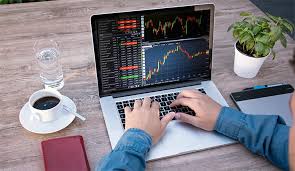
The Essential Guide to Forex Paper Trading for Beginners
Forex paper trading is an effective way for new traders to familiarize themselves with the foreign exchange market without risking real money. This practice allows traders to simulate actual trading scenarios, gaining the necessary skills and experience before entering the market with real capital. forex paper trading Best UAE Brokers can also provide tools and platforms that facilitate paper trading, making it easier for novices to learn. In this article, we will explore the concept of forex paper trading, its benefits, and how to get started.
What is Forex Paper Trading?
Forex paper trading refers to the simulated trading of currency pairs in the foreign exchange market without the use of real money. Instead of executing actual trades, traders use virtual funds to practice their strategies and decision-making processes. This allows for a safe environment to learn market dynamics, test strategies, and develop trading skills.
Benefits of Forex Paper Trading
1. No Financial Risk
The most significant advantage of paper trading is that it eliminates the risk of losing real money. Traders can experiment with various strategies and approaches without any financial consequences. This makes it an excellent choice for beginners who are still learning the market’s intricacies.
2. Skill Development
Forex paper trading allows traders to hone their skills in a pressure-free environment. By practicing different trading techniques, traders can develop their analytical abilities, improve their discipline, and learn to manage their emotions under market fluctuations.
3. Testing Strategies
Experienced traders can benefit from paper trading by testing new strategies before implementing them with real funds. This enables them to assess the effectiveness of their strategies and make necessary adjustments based on their simulated results.
4. Understanding Market Behavior
By engaging in paper trading, traders can observe how different economic indicators and news events affect currency pairs. This provides valuable insights into market behavior and helps traders become more adept at predicting future movements.
How to Get Started with Forex Paper Trading
1. Choose a Trading Platform
Many Forex brokers offer demo accounts that allow for paper trading. When selecting a platform, look for one that provides sufficient educational resources, analytical tools, and user-friendly interfaces. Consider reading reviews and checking the features of Best UAE Brokers to find the right fit for your needs.
2. Set Clear Goals
Define what you hope to achieve with your paper trading. Are you looking to test a specific strategy, or are you aiming to gain overall market understanding? Setting clear goals will help you stay focused and use your practice time effectively.
3. Create a Trading Plan
A solid trading plan will guide your paper trading activities. This should include your trading strategy, risk management rules, and criteria for entering and exiting trades. Having a plan will also help you analyze your performance later on.
4. Keep a Trading Journal

Document your trades, observations, and emotional responses in a trading journal. This practice enables you to reflect on your actions, learn from your mistakes, and track your growth over time.
5. Analyze Your Performance
After completing a series of paper trades, take time to review and analyze your performance. Look for patterns in your trades—what worked well and what didn’t. This will help you identify strengths and weaknesses, allowing for continuous improvement.
Common Mistakes to Avoid in Paper Trading
1. Treating Paper Trading Like Real Trading
One of the biggest mistakes beginners make is treating paper trading as if it were real. While it’s important to take it seriously, the emotional stakes are different when there’s no real money on the line. Keep this in mind as you practice; otherwise, you may develop unrealistic expectations.
2. Over-Leveraging
Many traders tend to over-leverage their trades when using virtual funds. This practice can lead to risky behaviors that may not be sustainable in real trading, where such risks can cause significant losses. Approach paper trading with a realistic mindset.
3. Ignoring the Learning Process
Remember that paper trading is a learning tool. Take the time to explore various strategies and understand market behavior rather than just focusing on how much profit you can make during practice.
Transitioning from Paper Trading to Real Trading
Once you feel confident in your trading abilities through paper trading, the next step is to transition to live trading. Here are some tips for making that transition smoother:
1. Start Small
When beginning live trading, consider starting with a small amount of capital. This allows you to manage risk more effectively while still gaining real market experience.
2. Stick to Your Trading Plan
Continue to follow the trading plan you developed during your paper trading phase. This consistency will help you manage your emotions and make rational decisions even when real money is at stake.
3. Keep Learning
The forex market is always changing. Keep educating yourself and adapting your strategies as needed. Continue honing your skills through courses, webinars, and keeping up with market news.
Conclusion
Forex paper trading offers a fantastic opportunity for both new and experienced traders to practice their skills without risking real money. By understanding how to effectively utilize this tool, traders can build confidence, refine their strategies, and develop a much deeper understanding of market dynamics. Whether you’re a beginner or an experienced trader looking to improve, paper trading is an essential step in your trading journey.
